Charleston Currents #11.31 | June 17, 2019
MINIATURE EXHIBIT IN D.C. A first-ever model of Magnolia Plantation and Gardens is one of 20 exhibits on display at the U.S. Botanic Garden at the base of the U.S. Capitol. The exhibit, which opens today, is part of the American Public Garden Association’s week-long conference. ““We are very excited by the Botanic Garden’s invitation to be among some of the nation’s most prestigious gardens,” executive director Tom Johnson said. “This is truly a plus for Charleston, the state of South Carolina and the Drayton family. We look forward to having our garden display provide a glimpse of Magnolia to those who’ll see it at our nation’s capital.” See more photos.
 FOCUS, Morris: Let’s work proactively to build a brighter Charleston future
FOCUS, Morris: Let’s work proactively to build a brighter Charleston future
COMMENTARY, Brack: Dealing with Southern ghosts of the past
IN THE SPOTLIGHT: Magnolia Plantation and Gardens
ANOTHER VIEW, McCoy-Lawrence: Voters aren’t getting voting system they deserve
GOOD NEWS: Remembering a Revolutionary victory, more
FEEDBACK: On a liberal arts education
MYSTERY PHOTO: Mystery box building
S.C. ENCYCLOPEDIA: Slavery in South Carolina
CALENDAR: Charleston Carifest to start June 20
FOCUS: Let’s work proactively to build a brighter Charleston future
By Kyra Morris, contributing editor | There are four key issues at the heart of every community. These are jobs, housing, education and infrastructure. Charleston is very fortunate to have a diverse foundation of businesses and a plethora of jobs. This is in large part due to many local business leaders, our local and state government, and the Charleston Regional Development Alliance, an association put together after we lost the Charleston Naval Shipyard in the early 1990s.
When the naval shipyard, our largest employer, closed, our community heard the need and came together at a critical point in time. Leadership from all parts of the Tri-county area worked tirelessly to solve the jobs problem. We wanted strong, sustainable employment for our citizens. This effort paid off over time. Charleston is now known all over the world, and people are coming by the thousands both as tourists and new residents. We have jobs.
The other three issues though are still in the “need” stage. We are struggling with the availability of affordable workforce housing. Our pipeline of skilled and educated workers from within our neighborhoods is lacking, and the complaints about our roads and snarled traffic are frequent and loud.
Again the citizens, business leaders, and public servants need to work together as one region to look at these issues proactively. In 2012, the Charleston Metro Chamber of Commerce created a program called Accelerate Greater Charleston. The chamber wanted to provide important data to show what the needs are and will be, and also to help channel the voice of the Charleston community. They’ve done and accomplished many things with a lot of input from both the public and private sector.
- The chamber provides trips to sister cities to study housing, entrepreneurship, infrastructure and education.
- After the Nashville trip, regional career academies in 24 of 26 high schools were launched. These career academies expose high school students to work experiences with partnering businesses. The students have the ability to graduate with dual credits from Trident Technical College. And they have the potential for gainful employment upon graduation.
- After the San Antonio trip, the chamber helped fund the Youth Apprenticeship Program by collaborating with Trident Technical College and Apprenticeship Carolina. This program is now being recognized as one to emulate across our country.
- The chamber provides the resources to gather the data, collate the information and determine what the high demand occupations are and where the trend is going. This helps educators provide education that truly creates talent in our workforce.
- The chamber hired a lobbyist and formed an advocacy committee that led a statewide coalition to pass the motor fuel users fee, resulting in over $600 million in on-going infrastructure funding.
- The advocacy committee also aided in the passage of the nuisance lawsuit bill and tax credits for early stage technology startup companies
- The chamber provided research to come up with a plan for functional mass transit for our region. Lowcountry Rapid Transit is happening and it has a lot of positive features.
- The Investment Opportunity Study, a recent work of the chamber, puts the data together so that we can see our region the way an investor would view us. It is enlightening, sobering and helpful.
The chamber has been part of positive change and vision for Charleston. It is now creating the next plan to continue the momentum forward – Accelerate Greater Charleston 3. The chamber is not an exclusive club, but the largest business membership organization in our area with over 1,600 members. Their work is available to all. If you want to get involved, to learn more about the facts, and to have your voice heard, they will welcome your participation.
I’ve used the Chamber as an example, a strong example. It has tentacles and processes to get involved in every issue of concern. There are many other organizations also doing good things. There are many ways to get involved to work towards the sustainability of a thriving Charleston. We should not bury our heads in the sand and pretend our problems will go away or solve themselves, nor should we be negative ninnies talking only of the existing problems. All of us whether we are citizens, business leaders or public servants need to work together as a region to look at these issues proactively. We need an inquisitive eye to see the beneficial long term solutions.
We have the potential to be a role model for the world. We can have welcoming commerce, housing where workers can live near their jobs, beautiful green spaces and water playgrounds, and educational pipelines that catapult our youth into sustainable careers. It’s up to us. Let’s gather the positives and shout them loudly. Go Charleston!
Kyra H. Morris, a Certified Financial Planner, is CEO of Morris Financial Concepts, Inc., in Mount Pleasant. A national leader in the financial planning profession, she has been named several times by leading magazines as one of the country’s top financial planners.
- Have a comment? Send to: editor@charlestoncurrents.com
BRACK: Dealing with Southern ghosts of the past
By Andy Brack, editor and publisher, part 1 of 2 | This is the story of three cousins. Well, they’re pretty sure they’re all cousins because they think they are linked genetically to the same man. But they’re not 100 percent sure because some of the records are lost.
 They do know, however, that they’re linked by circumstance and family to that man, a South Carolina plantation owner who moved his family and 14 slaves to Florida before the Civil War. Later he moved back to the Palmetto State, signed the state’s Ordinance of Secession, fought and served in the state Senate.
They do know, however, that they’re linked by circumstance and family to that man, a South Carolina plantation owner who moved his family and 14 slaves to Florida before the Civil War. Later he moved back to the Palmetto State, signed the state’s Ordinance of Secession, fought and served in the state Senate.
Charlie Smith of Charleston and Brenda Kinsler of Washington, D.C., met almost 20 years ago while doing genealogical research online. They discovered they were chasing down the family tree of John Herman Kinsler (1823-1902). He, like Smith, was white. Brenda Kinsler and her first cousin, writer Cynthia White of St. Petersburg, Fla., are black.
Smith says Brenda Kinsler gave him the gift of family that he never knew existed and that required some thought on how to use it. After years of research and a bond that blossomed and strengthened over time, the research buttressed a book, From Whence We Came, published last month.
“An unknown part of my family whose first association with the part of the family familiar to me, was rooted in kidnapping, human trafficking and the enslavement of our African ancestors by our German-Swiss ancestors,” Smith wrote in the foreword. “Enslavement is in fact how our family came into being. No amount of romanticizing can ever change the evil at the root of who we are today as the Kinsler family.
“Even if the first relationships from which our family grew had been consensual (and I have found no evidence that they were) the power imbalance between our white German-Swiss ancestors and our enslaved African ancestors was never about anything more than building the wealth of the German-Swiss ancestors at the expense of the lives of our African ancestors. When that system of enslavement transitioned to other forms of slavery after emancipation, our African ancestors were largely abandoned by our German-Swiss ancestors.”
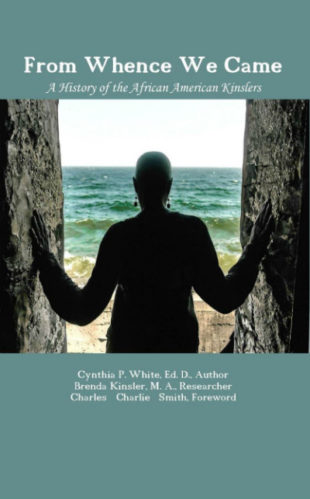 Brenda Kinsler says if she and Smith aren’t related by blood, they’re related by history like many Southern families today.
Brenda Kinsler says if she and Smith aren’t related by blood, they’re related by history like many Southern families today.
“We don’t know about the relationships back then,” she said. “All I know is the slaves and enslavers had very close relationships.”
At some point through the years, Brenda wanted to find the Kinsler slave cemetery. She and Smith visited the old family plantation near Blythewood in Richland County. The owner of the property led them to a graveyard.
“There are no words that can describe how I was feeling at that time,” Brenda remembered as she looked at about 20 unmarked graves, that, unusually, had headstones.
White, who joined the story to write the history of the family research, recalled visiting the cemetery: “It’s hard to describe the feeling. It was just one of those sacred moments. There was this connection.”
The new book memorializes the connection. It shares how complicated notions of family can be in the South. And the book serves as a guide for one way that black and white Southerners, still haunted by race, can start looking forward, not backwards.
White said she hoped the book would give an incentive to black Americans to learn about their past. “What I hope it will do is give them the sense of where they came from and they can look at where they are now.”
She also hopes white readers understand “that slavery does not define African Americans. It is not who we were but rather what was done to us. We are a vital part of this nation’s history. I think that we as a family and as people would want whites to acknowledge our humanity. …
“What happened to us was real and the vestiges of it still remain. Acknowledgment of the wrong inflicted is the first step. A heart change is a next step. Real change occurs when men and women are moved in their hearts to want for others what they want for themselves and to accept that all deserve to live freely, equitably and justly in our society.”
- Next week: Thoughts on ways to embrace racial healing
Andy Brack’s new book, “We Can Do Better, South Carolina,” is now available for $14.99 in paperback via Amazon.
- Have a comment? Send to: editor@charlestoncurrents.com
SPOTLIGHT: Magnolia Plantation and Gardens
 The public spiritedness of our underwriters allows us to bring Charleston Currents to you at no cost. Today we shine our spotlight on Magnolia Plantation and Gardens, founded in 1676 by the Drayton family. It has survived the centuries and witnessed the history of our nation unfold before it from the American Revolution through the Civil War and beyond. It is the oldest public tourist site in the Lowcountry and the oldest public gardens in America, opening its doors to visitors in 1870. Open 365 days a year, Magnolia offers its visitors splendid tours of nature and history and the role African-Americans played in the development of its award-winning Romantic-style gardens.
The public spiritedness of our underwriters allows us to bring Charleston Currents to you at no cost. Today we shine our spotlight on Magnolia Plantation and Gardens, founded in 1676 by the Drayton family. It has survived the centuries and witnessed the history of our nation unfold before it from the American Revolution through the Civil War and beyond. It is the oldest public tourist site in the Lowcountry and the oldest public gardens in America, opening its doors to visitors in 1870. Open 365 days a year, Magnolia offers its visitors splendid tours of nature and history and the role African-Americans played in the development of its award-winning Romantic-style gardens.
- Visit www.magnoliaplantation.com to learn how you can experience a complete plantation experience.
- Click here to learn about events and what’s new.
- To meet all of our underwriters, click here.
McCoy-Lawrence: Voters aren’t getting voting system they deserve
Editor’s Note: The State Election Commission announced this week it would spend $51 million on a new statewide voting machine network. As offered in this space over the last year, the League of Women Voters closely watched the process and suggested other options. Here’s a reaction to this week’s news.
By Christe McCoy-Lawrence | The League of Women Voters of South Carolina is, of course, distressed that the state has chosen to pay more money to get less of a voting system than what it could have obtained and than what the citizens of South Carolina deserve.
We had hoped for a new voting system that was primarily hand-marked paper ballots scanned at the precinct. We know that such a system could have been acquired for about half the cost of the planned new system.
We had hoped for a system that would lead to shorter lines at the polling places. Reverting to hand-marked paper has been shown to reduce wait time for voters. South Carolina’s wait times are often among the worst in the nation, and staying with an electronic system is likely to ensure that long lines continue to be the norm.
We had hoped for a system that provided voter-verifiable ballots. With the new system, the election authorities will be able to provide a statistical verification of the results, but voters will not be able to ensure that their ballot choices will be counted as they see them on the printed paper.
We had hoped for a system that had in it as little software as possible. The vendor of the current system has twice been unable to write software without some errors that have led to votes being uncounted or miscounted. The new system uses the same vendor as the current system, and we will not know for some time (if ever) whether they have learned how to write correct software.
We had hoped for a system with as little electronic machinery as possible, because the maintenance cost for that hardware is a significant burden on the counties. Richland County, for example, has been paying more than $100,000 per year in hardware maintenance costs. We do not know yet what the new fees will be, but this burden on the counties will continue to be a problem and will take money away from other important election needs.
We had hoped for a system that did not require the purchase of some 13,500 voting computers. That money could have been spent to improve poll worker training, polling place access, location, and accessibility, and a better overall experience for South Carolina voters. Instead, those funds will be unavailable for the general purposes of improving elections.
We had hoped that South Carolina voters could expect a better system, and thus a better election experience. Since a voting system has a projected lifespan of fifteen years, it seems that fulfilling that expectation may have to wait until 2034.
Christe McCoy-Lawrence of Holly Hill is co-president of the League of Women Voters of South Carolina.
- Have a comment? Send to: editor@charlestoncurrents.com
Remembering a Revolutionary victory, more
Staff reports | Carolina Day, a special day for remembering a key day of South Carolina’s historical role in the Revolutionary War, will be celebrated June 28. Back in 1776, a British fleet pounded Sullivan’s Island and landed troops to take what is now Fort Moultrie, but were repelled by patriots in what became their first significant victory.
![]() According to the Charleston County Public Library, “If you’ve ever wondered why there’s a palmetto tree on the South Carolina state flag, or why we’re known as the Palmetto State, then you need to hear this story.” You can learn more here, too.
According to the Charleston County Public Library, “If you’ve ever wondered why there’s a palmetto tree on the South Carolina state flag, or why we’re known as the Palmetto State, then you need to hear this story.” You can learn more here, too.
To remember what happened 243 years ago, you can tour Fort Moultrie on Sullivan’s Island or listen to period music in White Point Gardens at The Battery in downtown Charleston as performed by the Charleston Concert Band. The performance is slated to begin at 12:30 p.m.
In other Good News:
Buying land. The folks at Fresh Future Farm in North Charleston will launch a two-month campaign on June 19 (“Juneteenth”) to try to raise $60,000 to buy land they manage and finish with infrastructure improvements for the community operation, which includes a store, tour, food production and more. Learn more here.
Challenge gift succeeds. Back in 2017, local philanthropist Linda Ketner offered a $25,000 challenge gift to the College of Charleston Libraries for a project dedicated to collecting an dsharing stories of the area’s LGBTQ community. The college announced last week that a significant contribution by Charleston literary editor Harriet McDougal combined with more than 20 others allowed the college’s libraries to meet and surpass the challenge goal with more than $53,000 in commitments to the project. Congratulations!
Renovations ahead. The Charleston Visitor Center at 375 Meeting St. will close for interior renovations starting today. A temporary visitor center will operate out of the Best Friend Train Museum, 23 Ann St.
New library cards. The Charleston County Public Library has unveiled three new library cards, including the winning design from the system’s first library card design context. Check it out.
Big money. This isn’t really good news, but it’s important to realize: Statehouse Report correspondent Lindsay Street on Friday reported that South Carolinians pay almost a quarter billion — billion! — dollars in fees to payday and title loan companies with interest rates that can approach 700+ percent. Most of the payers are low-income earners. Take a look and send feedback with any ideas on how to wrangle in this mess.
On a liberal arts education
To the editor:
![]() Liberally spread the sesame seeds on the topping in my recipe means, “don’t be afraid to use too much” or “be generous” or “it’s OK to spill over.” You get the idea; err on the side of too much rather than too little because more enhances the richness of what you will be consuming. It certainly does not suggest conserving the sesame seeds.
Liberally spread the sesame seeds on the topping in my recipe means, “don’t be afraid to use too much” or “be generous” or “it’s OK to spill over.” You get the idea; err on the side of too much rather than too little because more enhances the richness of what you will be consuming. It certainly does not suggest conserving the sesame seeds.
What is wrong with a liberal education? Clearly in a liberal education there are too many ideas to consider, ways of looking at things or people sharing the human condition that lead us down the path of Christian thinking to, “Love one another” as that would be too many to love. Where would we draw the line? Christians, not Muslims, not refugees, not them.
How should education be improved? Liberally narrowing down educational content to rule out the excess of too much is the alternative path to improving education by focusing on such things as employment ready skills and job ready, providing ready blinders to the exclusion of teaching values, ethics and doing the right thing arrived at by thought, metaphor and parental guidance. Besides, we need people, even our representatives to easily and readily fall into line behind our leader or our policies.
— Fred Palm, Edisto Island, S.C.
Send us your thoughts
We’d love to get your impact in one or more ways:
Send us a letter: We love hearing from readers. Comments are limited to 250 words or less. Please include your name and contact information. Send your letters to: editor@charlestoncurrents.com. | Read our feedback policy.
Tell us what you love about the Lowcountry. Send a short comment – 100 words to 150 words – that describes something you really enjoy about the Lowcountry. It can be big or small. It can be a place, a thing or something you see. It might the bakery where you get a morning croissant or a business or government entity doing a good job. We’ll highlight your entry in a coming issue of Charleston Currents. We look forward to hearing from you.
Boxy building
Here is a picture of a building you might have seen but not noticed. This one may be a little tougher than usual because it probably won’t turn up on photo search engines. Send your guess to editor@charlestoncurrents.com. And don’t forget to include your name and the town in which you live.
Our previous Mystery Photo
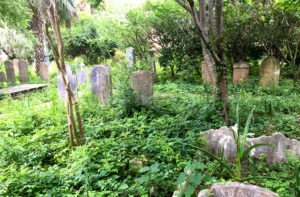 Our June 10 mystery, “Looks like another cemetery,” was, in fact, a cemetery — the beautiful and wild cemetery of the Unitarian Church on Archdale Street. If you haven’t visited, you should stop by and enjoy how an array of foliage runs in and around grave markers that have been there for decades.
Our June 10 mystery, “Looks like another cemetery,” was, in fact, a cemetery — the beautiful and wild cemetery of the Unitarian Church on Archdale Street. If you haven’t visited, you should stop by and enjoy how an array of foliage runs in and around grave markers that have been there for decades.
Congratulations to those who correctly identified the cemetery: Jim McMahan, Joseph DuRant and Stephen Yetman, all of Charleston; Chris Brooks of Mount Pleasant; Bill Segars of Hartsville; Archie Burkel of James Island; George Graf of Palmyra, Va.; Marnie Huger of Richmond, Va.; and Jay Altman of Columbia.
Segars observed: “ I’ve been to this graveyard and was impressed with the “different way” that this final resting place is kept. The Atlas Obscura website says of this graveyard, “That’s how the dead would want it, which is why they wanted to be buried here: to spend eternity giving back to nature.”. Sounds reasonable to me.
Burkel added, “The theory behind its natural look is that cemeteries SHOULD be left natural. ‘Mother Nature” is the best designer of them all.”
Graf figured out the graveyard thanks to a clue embedded in the photo: “My best clue besides the overgrown vegetation was seeing a peek of the grave obelisk for Edward Henry Strobel. Did you know he was born in Charleston in 1855 and died in Bangkok, Siam, in 1908?
“In 1884, Strobel participated in the presidential campaign and after Cleveland won the election, he offered Strobel the post of Secretary of Legation at Madrid. Strobel accepted this position and worked in Spain for five years, where he worked as charge d’affaires for part of the time. In 1894, he became Minister to Ecuador and then also the Minister to Chile. From 1894-1905, Strobel traveled around the world working for the American government. In 1905, Strobel returned to the U.S. after being poisoned in Egypt. Strobel suffered for 15 months to fight off the poison. After he survived the poison, he returned to his work in Siam, Thailand, but Strobel never really fully recovered. He died three years later in Siam where he was greatly respected. “
What a great story! Thanks, George.
- Send us a mystery: If you have a photo that you believe will stump readers, send it along (but make sure to tell us what it is because it may stump us too!) Send it along to editor@charlestoncurrents.com.
HISTORY: Slavery in South Carolina
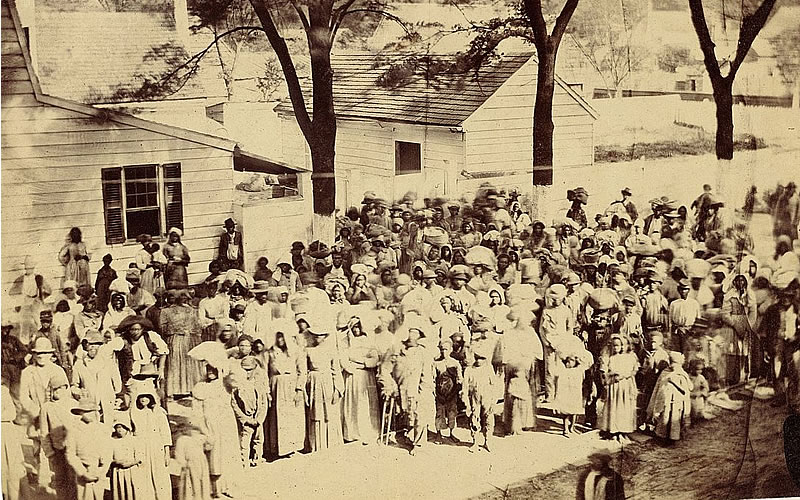
Slaves at J.J. Smith’s Plantation in Beaufort County, 1862. More.
Editor’s Note: This an excerpted version of the full article on slavery, which can be found here in the S.C. Encyclopedia.
S.C. Encyclopedia | Africans were present at the founding of the English colony in South Carolina and within several decades became a majority. …(I)n plantation colonies African slaves came to be the universal solution to problems of labor when other solutions, including white indentured servitude and bound Native American labor, proved inadequate. South Carolina was distinctive, however, in that it was alone among England’s colonies in continental North America in preferring African labor to the former. … Africans were imported in significant numbers from about the 1690s, and by 1715 the black population made up about sixty percent of the colony’s total population. This marked another distinctive feature of South Carolina, for it was the only colony in English North America where this proportion existed. …
The onset of cotton production [after the invention of Eli Whitney’s cotton gin in 1793] contributed to a substantial increase in the slave population, and by 1830 the slave population was almost equal to the white population. This was in contrast to the lowcountry, where blacks had outnumbered whites since the beginning of the eighteenth century.
The expansion of slavery throughout the state led to the full maturity of the slave society in South Carolina. By 1860, 45.8 percent of white families in the state owned slaves, giving the state one of the highest percentages of slaveholders in the country. During the antebellum era the majority of slaves lived on plantations claiming more than twenty slaves, while the majority of slaveholders owned far fewer than twenty slaves.
Largely concentrated in places such as the rice regions of the lowcountry and fertile cotton regions such as Sumter District, slaves created communities shaped as much by their own interactions as by their relationships with whites. Slave cabins on large plantations were often built in rows on either side of dirt roads or “streets” relatively close to the fields but some distance from the masters’ houses. This arrangement provided both physical and to some extent psychological distance between masters and slaves, allowing slaves some autonomy once the workday was over, a luxury that was often denied house servants and those living on small farms. The slave family was generally made up of a mother and a father living in a cabin with their children and perhaps extended kin.
Slave men and women were often married and lived in monogamous relationships, although strictures against premarital sex were often not closely adhered to in the slave communities. Despite the real possibility that a husband or wife could be sold, large numbers of slave couples lived in long-term marriages, and most slaves lived in double-headed households. When suitable husbands could not be found on plantations, masters often allowed “abroad” marriages uniting men and women from neighboring plantations. It was in a master’s financial interest to allow these unions because the more children a slave woman had, the more slaves the master could claim as his property. The average age of childbearing among slave women in the antebellum South was nineteen years old, while the average age for white women was twenty-one.
Once weaned from their mothers, and sometimes even before, slave children on large plantations were usually cared for and watched after by older slave women while their mothers went back to work in the fields. Children were initiated to work at the age of five or six, learning how to take orders and fulfill small tasks, and on cotton plantations they helped with the labor-intensive job of picking cotton. By the age of ten or twelve they were fully initiated into the world of adult work, although they were not expected to do the work of a full hand until about age sixteen.
While the slave’s work regime was intensive, slaves by no means passively acquiesced to the whims of masters. The many ways that slaves resisted the institution of slavery have been major themes of historical literature over the years. Over time, slaves negotiated rights and customs that allowed them to build close-knit communities and develop family bonds. These informal customs were recognized by masters who wanted to keep slaves as productive as possible. Everyday forms of resistance such as work slowdowns and breaking tools were used by slaves in this complicated negotiating system. Slaves customarily received part of the day Saturday and all day Sunday off from work in the fields, using this time to cultivate their own provision grounds, worship with family and friends, and court the opposite sex, among myriad other activities.
The most extreme form of resistance, open revolt, was not common in antebellum South Carolina, but slave violence against whites was a common occurrence, despite the fact that slaves convicted of committing such acts faced extreme punishments ranging from death to severe whipping. Slave runaways, those who in effect stole themselves, were numerous, as the ubiquitous advertisements in antebellum newspapers posting rewards for their capture attest. The goal of many was to escape to the North and freedom, but this was a difficult journey that only the fittest and most determined successfully completed. Many runaways fled temporarily, hiding close by with the support of the slave communities, in order to escape punishment or to protest actions taken by their masters.
Freedom came for all slaves in South Carolina as a result of the Union invasion of the state during the Civil War. The hard times associated with the slave regime did not end with emancipation for the state’s freedmen and freedwomen, but the family and community bonds forged during slavery proved invaluable assets during the Reconstruction era.
— Excerpted from an entry by Daniel C. Littlefield. This entry may not have been updated since 2006. To read more about this or 2,000 other entries about South Carolina, check outThe South Carolina Encyclopedia, published in 2006 by USC Press. (Information used by permission.)
CALENDAR: Charleston Carifest is coming for four days this month
![]() This Caribbean carnival celebration from June 20 to June 23 honors Caribbean American Heritage Month with four days of food, fun, music, costumes and more. On June 20, there’s an opening reception starting at 6 p.m. at the College of Charleston’s north area campus, followed by a fete on June 21 at the Cannon Street Arts Center. On June 22, there will be a parade that starts at 4 p.m. at King and John streets and leads to Brittlebank Park. On June 23, there’s a brunch at Cannon Street Arts Center. More info.
This Caribbean carnival celebration from June 20 to June 23 honors Caribbean American Heritage Month with four days of food, fun, music, costumes and more. On June 20, there’s an opening reception starting at 6 p.m. at the College of Charleston’s north area campus, followed by a fete on June 21 at the Cannon Street Arts Center. On June 22, there will be a parade that starts at 4 p.m. at King and John streets and leads to Brittlebank Park. On June 23, there’s a brunch at Cannon Street Arts Center. More info.
Also on the calendar:
Charleston 9 remembrance: 7 p.m. June 18, Charleston 9 Memorial Park, 1807 Savannah Highway, Charleston. The Charleston Fire Department will commemorate the 12th anniversary of the loss of nine firefighters in the Sofa Superstore fire. More info.
Shear Madness: Shows through June 30, West Ashley Theatre Center, 1401 Sam Rittenberg Center, West Ashley. Charleston Stage’s first show produced at its new Pearl Theatre will be the hilarious, award-winning Shear Madness, longest-running play in American theatre history. Learn more and get tickets here.
That Summer Book Sale: June 21-23, Charleston County Public Library, 68 Calhoun St., Charleston. The Charleston Friends of the Library will have more than 20,000 books, DVDs, CDs and more at low prices and great bargains. Supporting the sale generates money for the Friends, who provide more than $100,000 annual for public library programs.
Hat Day in the Sun: 11:30 a.m., June 21, Marion Square, King Street, Charleston. Once again, the Hat Ladies will be distributing FREE hats to men, women and children to emphasize the importance of hat wearing for sun protection. They’ll hand out hats as long as supplies last; one hat per customer. More: www.hatladies.org.
Events at the Gaillard. Check out these awesome coming events at the Charleston Gaillard Center, 95 Calhoun St., Charleston:
TheSkimm Night Out. 7:30 p.m., June 25. The founders of theSkimm are coming to your city for a fun night out, full of empowering conversation, networking, cheersing, and more to celebrate their new book, How to Skimm Your Life. Tickets are $48 to $150. More.
Frankie Valli and The Four Seasons: 7:30 p.m., June 29. Join the legendary Frankie Vallie and the Four Seasons, which had 71 chart hits through the years, at this show that will show the group is hotter than ever. Remaining tickets start at $78.
Lecture on Washington: 6:30 p.m., June 27, Charleston Museum, 360 Meeting St., Charleston. David L. Preston, a professor of national security studies at The Citadel, will deliver a lecture titled, “Why George Washington’s leadership still matters.” Hosted by the American Revolution Institute, a reception will start 45 minutes before the lecture. You can register online and need to do so by June 20. Cost: $25.
Food truck Friday: 5 p.m. to 8 p.m., June 28, The Ponds, 326 Hundred Oak Parkway, Summerville. You can enjoy food and popular gatherings with entertainment from Ocean Drive and several food trucks, including Smokin’ Gringos, Happy Thai, Greekin Out, Krystyna’s, Holy City Cupcakes, Booze Pops, and Pelican Sno Balls. It is recommended that attendees bring chairs and blankets. Coolers and BYOB are allowed.
Prince of Scribes Writers Conference: 10 am. to 6 p.m., June 29, Charleston Circular Church, 150 Meeting St., Charleston. Contributing editor Marjory Wentworth is among the writers in this all-day event featuring four workshops and a panel discussion remembering author Pat Conroy. Cost: $50, and includes a closing reception. Learn more and register.
Early morning bird walks at Caw Caw: 8:30 a.m. every Wednesday and Saturday, Caw Caw Interpretive Center, Ravenel. You can learn about habitats and birds, butterflies and other organisms in this two-hour session. Registration is not required, but participants are to be 15 and up. $10 per person or free to Gold Pass holders. More: http://www.CharlestonCountyParks.com.
AREA MARKETS
![]() TUESDAYS. The Mount Pleasant Farmers Market is every Tuesday from 3:30 p.m. to 7 p.m. at the market pavillion at Moultrie Middle School, 645 Coleman Blvd., Mount Pleasant. Free parking. Lots of activities. More info.
TUESDAYS. The Mount Pleasant Farmers Market is every Tuesday from 3:30 p.m. to 7 p.m. at the market pavillion at Moultrie Middle School, 645 Coleman Blvd., Mount Pleasant. Free parking. Lots of activities. More info.
WEDNESDAYS. The West Ashley Farmers Market is every Wednesday from 3 p.m. to 7 p.m. in Ackerman Park off Sycamore Avenue in West Ashley. The last week of the market will be the first week of October. More.
FRIDAYS/SATURDAYS: Night Market. Every Friday and Saturday from 6:30 p.m. to 10:30 p.m. for the rest of the year, you can shop with 108 vendors, including artists and craftsmen, at the night market on Market Street between East Bay and Church streets. It’s more than four blocks of local shopping and fun. Free.
SATURDAYS: Johns Island Farmers Market operates each Saturday from 9:30 a.m. to 1:30 p.m. year-round with more than 50 local farmers and vendors, food trucks, music and more. The market is located on the campus of Charleston Collegiate School, 2024 Academy Road, Johns Island
SATURDAYS: The Charleston Farmers Market is open 8 a.m. to 2 p.m. in Marion Square each Saturday through Nov. 30. More info.
- If you have an event to list on our calendar, please send it to feedback@charlestoncurrents.com for consideration. The calendar is updated weekly on Mondays.
If you like what you’ve been reading, how about considering a contribution so that we can continue to provide you with good news about Charleston and the Lowcountry. Interested? Just click the image below.
Now out in paperbrack, err, paperback
We Can Do Better, South Carolina! offers incisive commentaries by editor and publisher Andy Brack on the American South, the common good and interesting South Carolina leaders, such as former U.S. Sen. Fritz Hollings, civil rights advocate Septima Clark, former S.C. Gov. David Beasley and more. There also are discussions on civil rights struggles with which the Palmetto State continues to grapple. as well as commentaries on politics, governments, the hangovers of South Carolina’s past and her future opportunities.
We Can Do Better, South Carolina! is available for $14.99 in paperback or as a Kindle book for $7.99. Click here to purchase your copy. A paperback version will be ready for order isoon.
- If you have a comment or questions about the book, please let us know at: editor@charlestoncurrents.com
OUR UNDERWRITERS
Charleston Currents is an underwriter-supported weekly online journal of good news about the Charleston area and Lowcountry of South Carolina.
- Meet our underwriters
- To learn more about how your organization or business can benefit, click here to contact us. Or give us a holler on the phone at: 843.670.3996.
OUR TEAM
Charleston Currents offers insightful community comment and good news on events each week. It cuts through the information clutter to offer the best of what’s happening locally.
- Mailing address: P.O. Box. 22261 | Charleston, SC 29413
- Phone: 843.670.3996
Charleston Currents is provided to you weekly by:
- Editor and publisher: Andy Brack, 843.670.3996
- Contributing editor, common good, Fred Palm
- Contributing editor, money: Kyra Morris
- Contributing editor, Palmetto Poem: Marjory Wentworth
- Contributing editor, real estate: Digit Matheny
- Contributing editor, AT: Jerry Adams
- Contributing photographer: Rob Byko
SUBSCRIBE FOR FREE
Subscriptions to Charleston Currents are free.
- Click here to subscribe.
- Unsubscribe. We don’t want to lose you as a reader of Charleston Currents, but if you must unsubscribe, you will have to do it through the email edition you receive. Just go to the bottom of any of your weekly newsletters and click the “unsubscribe” function. If that doesn’t work, please send us an email with the word “unsubscribe” in the subject line.
- © 2008-2019, Statehouse Report, LLC. All rights reserved. Charleston Currents is published every Monday by Statehouse Report LLC, PO Box 22261, Charleston, SC 29413.


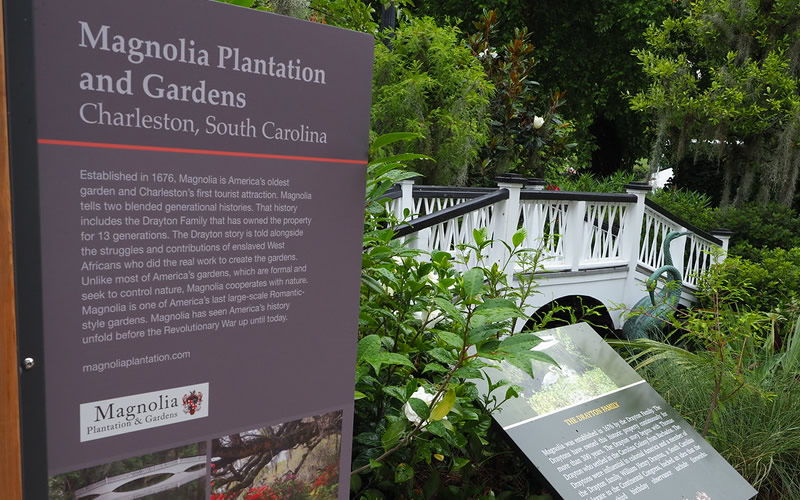
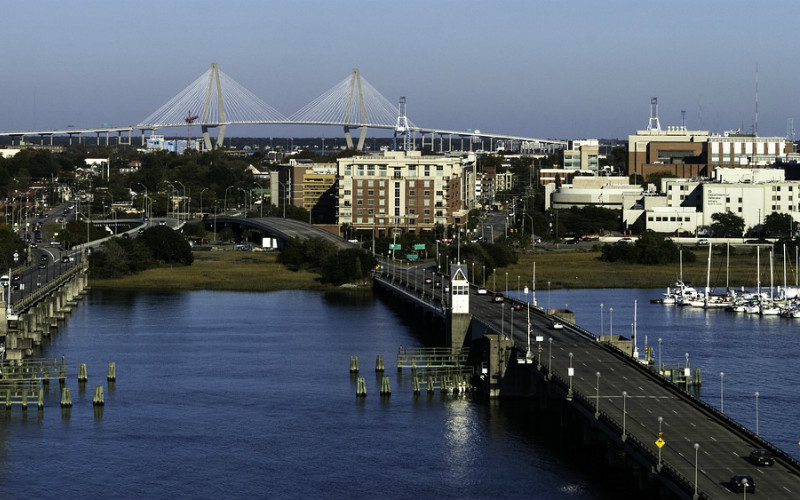
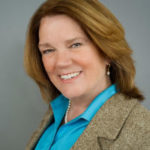
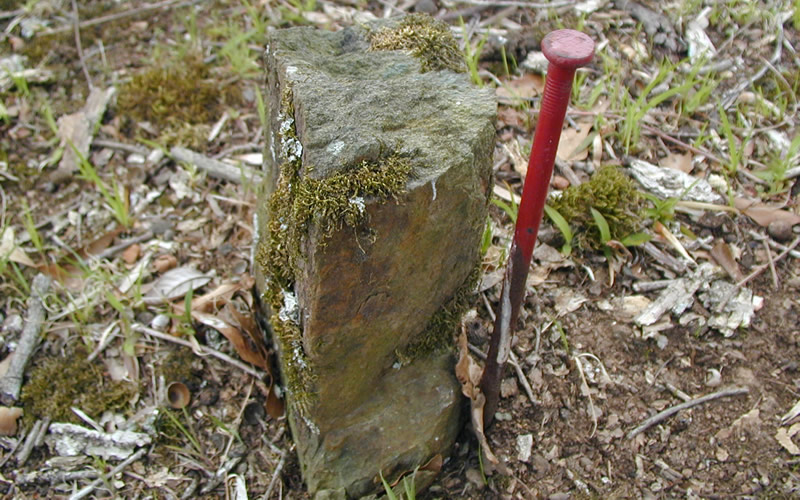

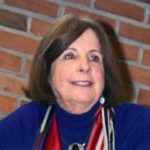
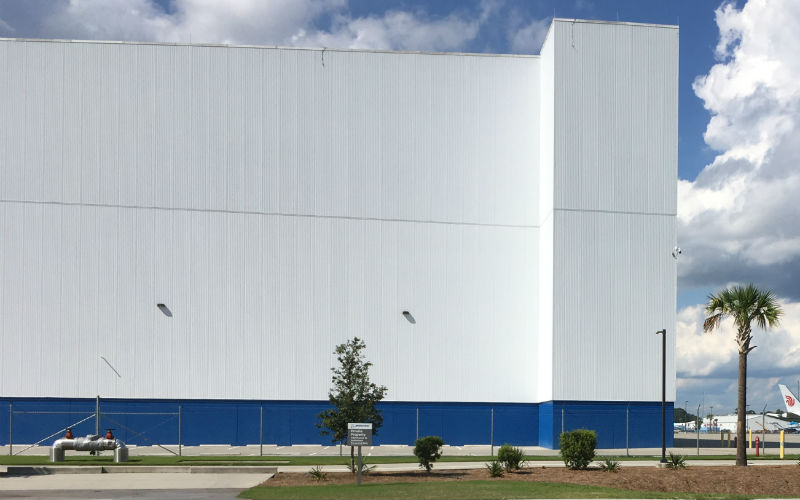

 We Can Do Better, South Carolina!
We Can Do Better, South Carolina!
























